Please Take Note: This is a review of the final game, but it might change slightly based on the success of the Kickstarter campaign. The game is being reviewed on the components and the rules provided with the understanding that “what you see is not what you might get” when the game is published. If you like what you read and want to learn more, we encourage you to visit the publisher’s website or visit the Kickstarter campaign. Now that we have all that disclaimer junk out of the way, on with the review.
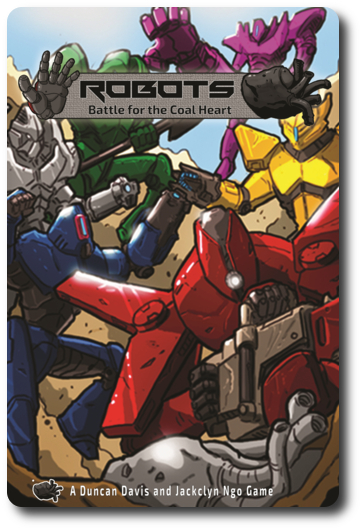
The Basics:
- For ages 8 and up (publisher suggests 9+)
- For 3 to 6 players
- Approximately 60 minutes to complete
Geek Skills:
- Active Listening & Communication
- Counting & Math
- Logical & Critical Decision Making
- Reading
- Pattern/Color Matching
- Strategy & Tactics
- Risk vs. Reward
- Hand/Resource Management
Learning Curve:
- Child – Easy
- Adult – Easy
Theme & Narrative:
- Ultimate power can corrupt any heart
Endorsements:
- Gamer Geek mixed!
- Parent Geek approved!
- Child Geek approved!
Overview
For the robots in Coal Pit 12A-4, life was an endless job of digging up the ground. Then something happened. Instead of coal, one of the robots found a mysterious black crystal the radiated power and the promise of a better existence. For the first time, each robot felt greed and an overpowering need to own the black crystal. Emotions were not part of their programming.
Robots: Battle for the Coal Heart, designed by Duncan Davis, Jacklyn Ngo, and to be published by Sherwood Games, will reportedly be comprised of 32 Gear cards, 66 Robot Parts (11 per Robot), 7 Action hexes, 1 Coal Heart hex, 12 Tracker tokens, 1 Quarry card, 1 First Player card, 60 Resource cubes (15 each in the colors black, green, blue, and gold), 1 Resource bag (for the Resource cubes), and 6 Playmats. As this is a review of a prepublished game, I cannot comment on the game component quality. The artwork by Gil Geolingo is colorful and captures the action between the robots that are battling to the last.
At the Edge of the Pit
To set up the game, first allow each player to select a Playmat of their choice. Place any Playmats not selected back in the game box.
Second, give each player 2 Tracker tokens and the 11 Robot Parts that match the same color as their Playmat. Players set 1 Tracker token to indicate zero Attack bonus and 1 Tracker token on 20 Hit Points. The Robot Parts can be stacked to one side of the player’s Playmat. Place any Tracker tokens and Robot Parts not used back into the game box.
Third, give each player their starting Resource cubes and place the rest in the Resource bag.
Fourth, layout the 6 Action hexes in any order in the middle of the playing area, face-up. Place next to the Action hexes the Coal Heart hex and the Quarry card. Randomly take 1 Resource cube from the Resource bag for every player in the game, plus 2 more. Place these Resource cubes on the Quarry card. If playing with 6 players, use the second “Scavenge” Action hex for a total of 7.
Fifth, shuffle the Gear cards and place 1 Gear card per player, plus 2, face-up in the middle of the playing area in a row. Place the rest of the Gear cards to one side of the row, face-down. This is the Gear draw deck for the duration of the game.
That’s it for game set up. Determine who should be the first player and give them the First Player card. Time to risk it all to win it all.
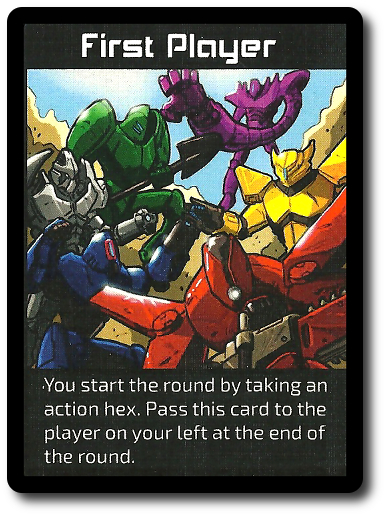
System Scan
The robots in the game are powerful machines full of potential. At the very start of the game, all players more or less have the same capabilities. As the game progresses, each player will begin to customize their robot in unique ways, giving some advantages and others disadvantages. To win the game, you must learn that each pro has a con and the only way to succeed is to understand how everything is connected.
The Playmat
The Playmat is like the player’s Heads Up Display (HUD). It contains everything they need to know about their own robot at a glance and helps them keep their objectives in sight. Common and universal knowledge is provided, such as action summaries, tips, and a resource key. Each Playmat also has a Hit Point track and an Attack bonus track for the player to record their current values. Finally, each Playmat contains a layout of the robot where the Robot Parts are placed. A quick scan of the Playmats would suggest that each is the same with the exception of the color and robot image in the corner. A closer inspection will reveal that each robot has a subtle, but important strengths and weakness, making them unique.
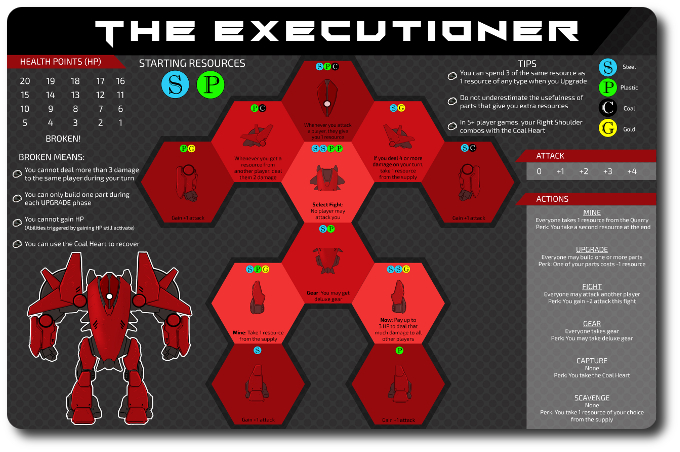
Robot Parts
All robots are not created equal except in the most general case. Each robot can be upgraded using 11 Robot Parts that provide bonuses and additional actions. All Robot Parts cost Resource cubes and can only fit in a specific spot on the Playmat. To assist the players in knowing what they want to build, the Playmat lists all of the bonuses and abilities provided, as well as when it can be used.

Robot Parts are necessity for two reasons. First, they open up a number of additional abilities and combos for the player, giving them the option to piggy back off of other actions to complete several more. Second, a player can win the game if they completely build their robot, which is no easy feat.
Gear Cards
The Gear cards represent different tools and equipment the player can use. These are not the same as Robot Parts. Gear cards are collected as an action during a phase. They come in 2 different types. These are “Regular” and “Deluxe”. These terms are used to determine Gear card availability during the game, wherein only 1 player per phase is able to select a “Deluxe” Gear card in most cases.

Gear cards, regardless of type, give the owning player a one-time ability. Once a Gear card is played, it’s resolved and then discarded. If the Gear draw deck is ever exhausted, the Gear discard pile is shuffled and becomes the new Gear draw pile. Each Gear card lists when it can be played, cluing in the player when they should consider using the Gear card to obtain an advantage.
The Black Heart of Greed
Robots: Battle for the Coal Heart is played in rounds, phases, and turns. Each round will have as many phases as there are players and each player will have 1 turn per phase. A typical phase is summarized here.
Step 1: Select Action Hex
During a game round, each player will take a turn being the First Player per phase. The first player selects 1 Action hex that has not been selected during the previous phases of the round. The action provided by the Action hex is now available to all players during this phase of the round.
Step 2: Take the Action
Starting with the First Player and continuing in turn order sequence, each player takes the action provided by the selected Action hex. The First Player (and only the First Player) gets an additional perk. In addition, a player might have a Robot Part built on their Playmat that provides an additional bonus based on the selected action. The Action hexes provide the following opportunities.
Mine
The “Mine” Action hex allows the player to take 1 Resource cube of their choice that is currently on the Quarry card. The Resource cubes are placed by the player’s Playmat. If the player has a perk for this action, they can collect 1 additional Resource cube after all players have had their turn. When all players have collected their Resource cubes, replenish the Quarry card using the Resource bag so it has 1 Resource cube per player, plus 2.
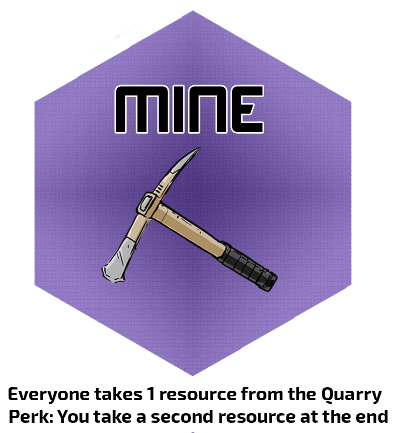
Upgrade
The “Upgrade” Action hex allows the player to build as many Robot Parts they can afford and place them on their Playmat. The Robot Part bonus is immediately active and Tracking tokens are adjusted as needed. There is no limit to the number of Robot Parts that can be built, but each Robot Part must be paid for using the player’s collected Resource cubes. If the player has a perk for this action, the player selects 1 Robot Part to be built that can have 1 listed Resource reduced by -1.
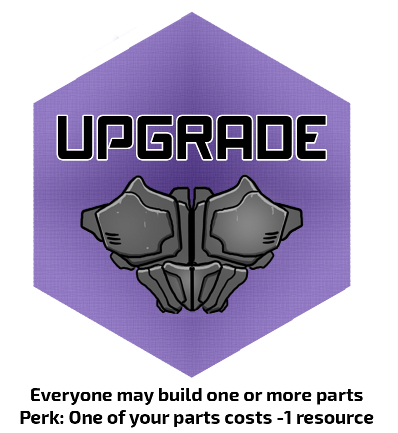
Fight
The “Fight” Action hex allows each player to attack any opponent they like. The damage dealt is equal to the current player’s Attack bonus value which is augmented by Robot Parts. If the player has a perk, they gain a +2 Attack bonus.
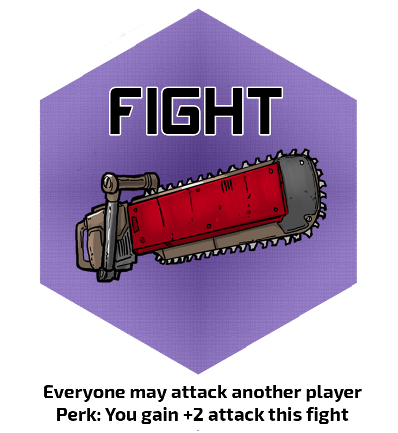
If a player takes enough damage, their Hit Points are reduced to zero and the player’s robot is “broken”. A broken robot can still be used in the game, but is not as effective.
- Cannot deal any more than 3 damage per opponent when the “Fight” Action hex is selected
- Cannot build more than 1 Robot Part when the “Upgrade” Action hex is selected
- Cannot obtain Hit Points, but all abilities that trigger when Hit Points are gained can still be activated (Hit Points still remain at zero)
The only way to regain Hit Points is to have the Coal Heart hex in your possession and select the “Capture” Action hex on your turn. This will give the robot 5 Hit Points.
Gear
The “Gear” Action hex allows each player to take 1 Gear card that does not have the keyword “Deluxe”. If the player has a perk, the can take a “Deluxe” Gear card.
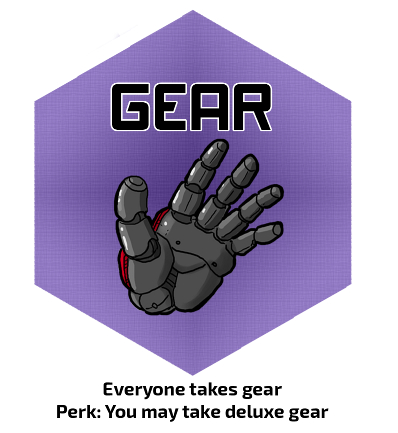
Capture
The “Capture” Action hex is only taken by the First Player. This allows the First Player to take control of the Coal Heart hex, taking it from any other opponent who currently has it. Any “Now” actions are also taken, but only by the player. All opponents do not get to take any action or ability.
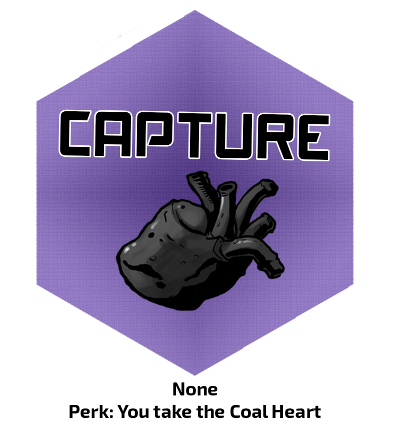
Scavenge
The “Scavenge” Action hex, like the “Capture” Action hex, only gives the First Player who selects it the action, but all players can use any Gear cards that can be played during the “Scavenge” Action hex. When taken, this action allows the player to take 1 Resource cube from the Resource bag (not the Quarry card). This is not a blind draw. The player can look for the specific Resource cube they need and add it to their Playmat.
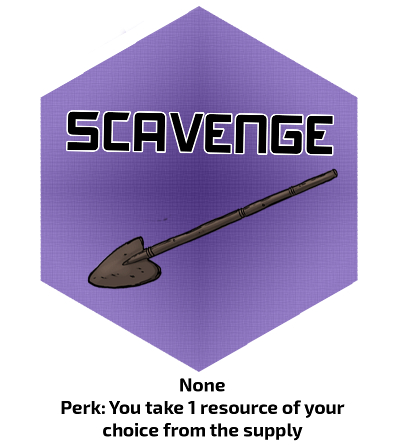
Next Phase and Ending a Round
After each player has had a turn in the phase, the selected Action hex is turned face-down. The First Player card is handed to the next player in turn order sequence. A new phase now begins with the new First Player selecting any face-up Action hex they like. After each player has had a turn to be the First Player, the round comes to an end. All Action hexes are flipped face-up and a new round begins with the first phase.
The Golden Heart of Victory
The game continues as described above. The first player to build all 11 Robot Parts or break all their opponents wins the game.
To learn more about Robots: Battle for the Coal Heart, visit the publisher’s website or visit the Kickstarter campaign.
Final Word
For the Child Geeks, the most enjoyable aspect of the game was building their robot. I never observed anything to suggest that the Child Geeks were selecting Action hexes on their turn to further a long-term goal. Rather, they selected what they wanted when they could. Which is a perfectly good strategy when we consider that only the First Player gets a perk, making some Action hexes very desirable. According to one Child Geek, “I wish their was more fighting, but I guess I really don’t. I don’t think our robots could take it.” The Child Geek brings up a very good point. While it’s easy to inflict damage, it’s difficult to avoid it. These are mining robots, built to smash. Not be smashed. Another Child Geek said, “The best part is being able to design your robot the way you want to.” Another great point by the Child Geeks, but I doubt they fully grasped the importance of their statement. Robots: Battle for the Coal Heart gives players a lot of flexibility in how they want to design their robot, but each step along the design path provides a benefit. Build the right part at the right time and the player can have an advantage over their opponents. When the games were over, all the Child Geek’s dug the Robots: Battle for the Coal Heart, giving it their full approval.
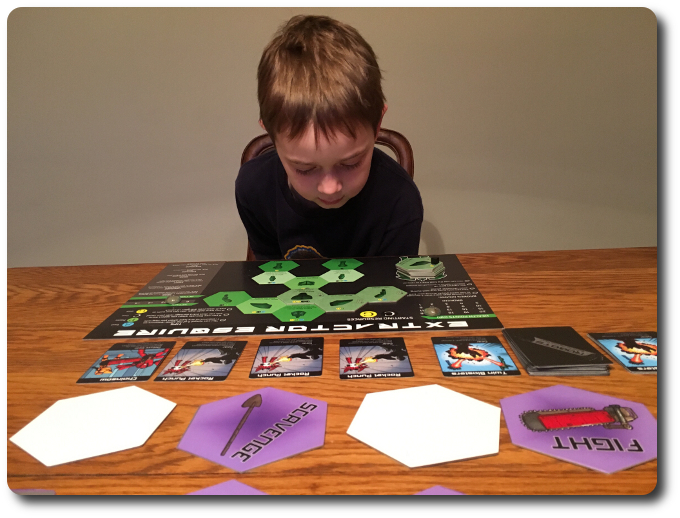
Sometimes the Child Geeks would select an action that had nothing to do with their current build
The most surprising observation with the Parent Geeks was how much the non-gamers enjoyed it. According to one non-gamer Parent Geek, “This game makes sense, you know? Everything you have to do and every option available to you is right there to view and think about. The hardest part of the game is not throwing a cube at another player who keeps attacking you.” Parent Geeks who had a great deal of gaming experience also appreciated the game, although they did so on a different level. According to one such Parent Geek, “You should put some thought into what you are building and what actions you take. While every player is given an opportunity in most cases, being the First Player to take them is enough of an advantage to make me pause and consider my turn carefully.” Finally, the casual games, those who like a good game but only on occasions where time and energy is abundant, applauded Robots: Battle for the Coal Heart. According to one such casual Parent Geek, “Easy to learn and fun to play, with just the right amount of difficulty and challenge to keep you interested, but not frustrated.” The only aspect of the game the Parent Geeks found a bit disappointing was the overall game length. A single game could take up to 90 or more minutes. Regardless, all the Parent Geeks approved the game for friends and family.
The Gamer Geeks hit Robots: Battle for the Coal Heart hard. To suggest they wanted to break it would be a bit melodramatic, but it was clear that the Gamer Geeks were looking for weaknesses to exploit. They found some. According to one Gamer Geek, “I know how to beat this game every time. All you have to do is learn the optimum build sequence and never deviate from it.” Another Gamer Geek said, “Even if you are broken, you can still win the game. Makes me question why I should bother to spend any time or energy in attacking when I cannot properly defend and the consequences thereof only slow you down a bit, but not to a point where I feel you are out of the race.” The Gamer Geeks had zero issues with the rules and found the game to be entertaining enough to keep them interested. Eventually, the Gamer Geeks split into two different groups. The first group found the game to be casual and flexible, allowing players to experiment and explore to find unique ways to victory. This was seen as good game design and suggested a level of game depth that is highly respected by the gaming elitists. The second group found the lack of serious consequences and obvious choices to suggest that the game lacked depth and challenge. In the end, the Gamer Geeks could not decide, resulting in a mixed level of approval from the gaming elitists.
This would appear to be a good example of a game you beat once and you don’t much feel the need to do it again. Mostly due to the fact that the optimum building path, once found, need never be strayed from. This is true to a point. What makes the game replayable is the many different ways the robot can be built and the different sequence of actions. However, with only two ways to win the game, the most meaningful actions are to build or fight. All other actions are there to support or augment.
Which, for casual players and inexperience players, gives a great deal of opportunity without the negative consequences of overwhelming the player’s mind. For those who have played games a long time and are quick to grasp the “Big Picture”, the game will feel a bit slow at times and frustrating, as the obvious choices to get ahead are out of reach. This leaves most players in the middle, feeling both excited for what is to come and disappointed with the current situation.
And this brings me to what I like most about the game. There is no luck to get in the way. Everything is visible with only the random Gear card draws to surprise players. The majority of the game will be spent reacting and making decisions based on other players’ actions. Once it’s a player’s turn, they get full control of the game’s direction for the duration of their turn. This is not an opportunity to be squandered, as it can easily nip the player in the bud if they don’t think it through. At least for the duration of the phase, that is.
Robots: Battle for the Coal Heart is difficult to classify. It has elements of heavy game play, but is not a heavy game in and of itself. It demands strategic thinking, but can be played with little in the way of critical thinking. It fits nicely in between highly competitive games and casual player interaction games. Not too heavy and not too light, but this does not make it perfect for everyone. Some suggested the game felt like milquetoast, while others found it to be full of challenging choices. I think it’s right in the middle. If the game sounds interesting to you, go find out more and see if this robot building game has all the right pieces.
This is a paid for review of the game’s final prototype. Although our time and focus was financially compensated, our words are our own. We’d need at least 10 million dollars before we started saying what other people wanted. Such is the statuesque and legendary integrity of Father Geek which cannot be bought except by those who own their own private islands and small countries.



